Essence-Based Innovation Consulting
Think Deeply, Broadly and Correctly
Compliant with “Essence-based innovation training” attracting attention from top companies / universities
Toyota, Honda, Panasonic, etc.

The University of Tokyo
* Hitotsubashi University
* Kanazawa University, etc.
Essence and Innovation

Let’s look at the relationship between essence and innovation.

Do you understand “what essence is?”
It’s the objective essence.
Not the subjective one.
* To make your visit meaningful, Please get the answer (here) at least .

The value that is considered by the world which cannot approach essence of value is nothing but the “something like value.”
Product value, work, worker, etc. are also “something like xxx.”

The value that is considered by a person who can approach essence of value thinks is “value itself.”
Product value, work, worker, etc. are also “xxx itself.”

Common sense is just a recognition that many people have in common.
Most of them are not based on essence (based on “something like xxx”).
The world isn’t aware of that.

Since essence is “universally correct,” it will generate innovations even if it is common sense breaking.
As with the newly discovered laws of nature.

Since essence is in everything, it will generate innovation in both tangible and intangible things.

The number of cranes that can generate innovation is decreasing…

Essence is what gives rise to universally accepted ideas.

Product value is created by the customer’s memory.
Therefore, even if the product disappears, it can be reproduced if the memory remains.
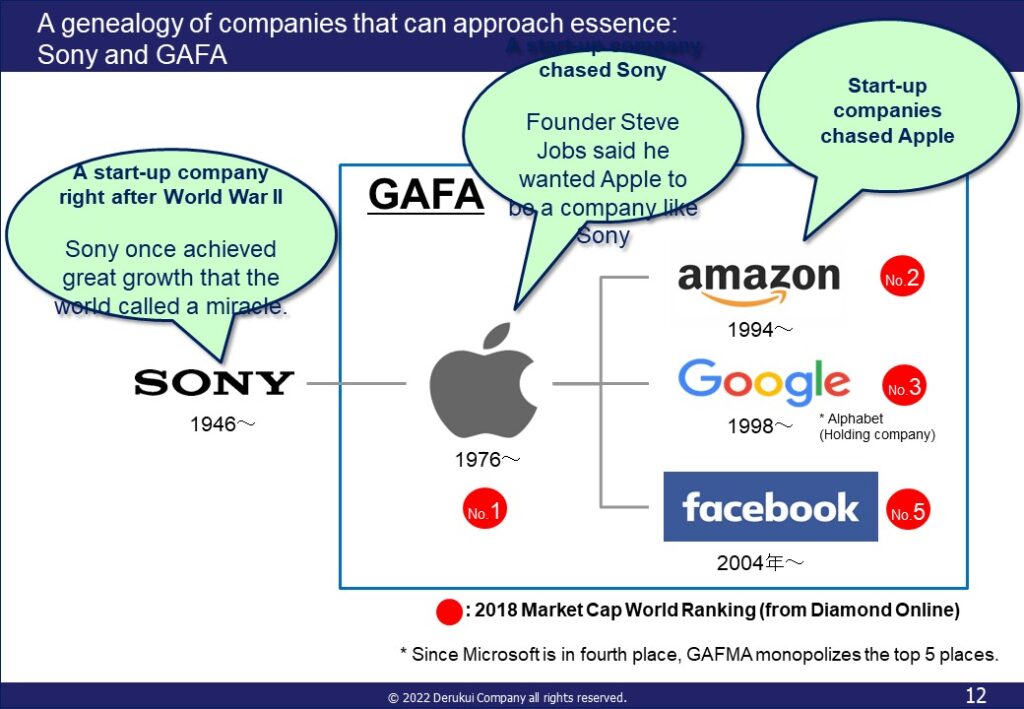
Perhaps GAFA’s root is in a Japanese company.

Again, the world does not understand “what essence is.”
Neither Sony once nor GAFA now would be an exception.
They were/are only “instinctively” approaching essence.
If you approach essence “logically”, you can exceed them.

Sony’s aibo model can continue to inspire customers’ memories.
Sony can charge more than \ 1 million per customer (about \ 0.2 million for aibo alone).
Related products will also sell well.
< Overview > Essence-based Innovation Consulting

Let’s take a look at the consulting overview.

The consulting service consists of two major components: Essence-based Innovation Training for awareness change, and support for project for idea generation and realization of those ideas.
Support for the realization of ideas is basically covers the formulation of an action plan only, but the implementation can be also covered.

In the early years, Essence-based Innovation Training was focused mainly on the manufacturing industry, but has now expanded to all types of industries.

The training will repeat group discussions on philosophical and epistemological themes with a highly logical approach.
Scrap & Build will occur in the head.

It is a training that focuses on “thinking” at the highest level in the world.
Online is no less effective than face-to-face.

The project covers four areas: product, business model, work(process), and person(organization).
Essence exists in everything.
We can aim to create essence-based innovation in all these areas.

There are no walls between teams.
Free to come and go and work concurrently.

For the owner, an Officer or associate officer level is preferred.
On the other hand, for managers, team leaders, and members, any position within the company is acceptable.

There should be no barriers with other organizations within the company.
The best environment is one in which anyone in the company can come visit at any time.

In-house production of the training and its dissemination is especially recommended.
It will create a common awareness and language within the company that will lead to the creation of innovation.
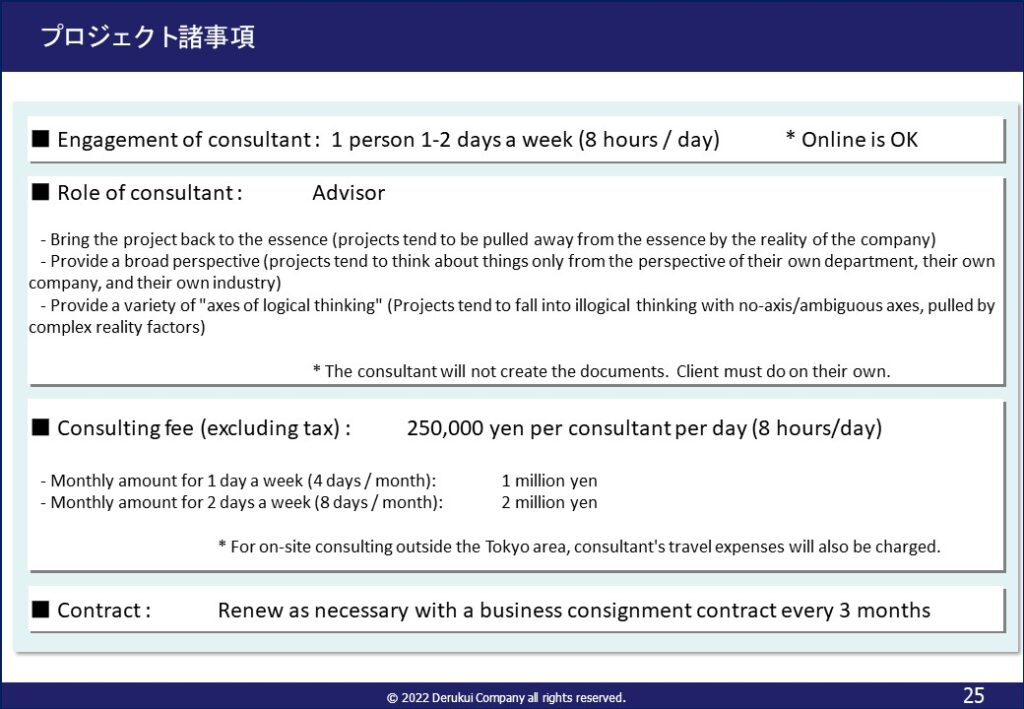
Creating documents is also a process of organizing thoughts.
Please do not rely on consultants, but rather have internal members create the documents together.
< Cases > Essence-based Innovation Consulting

Let’s look at two cases.

Company A is a well-known electronics manufacturer.

Company A was in financial difficulties and was highly aware of the crisis, so the direction was to aim for company-wide innovation creation.
The members were mainly engineers from the product development department.

On the way, all projects were suspended due to the acquisition by a foreign capital, and this project ended.
But after that, the activity continued in the form of being absorbed by the regular work of the development department.
In the spring of 2022, a hot product that is evaluated as “common sense breaking” by the world finally released.

Company A had a total of more than a dozen project members.
The project owner was the CTO, the project management office was covered by the product development general manager, the manager was the section manager, and most of the members were section managers or one step ahead of section managers.

Only the operational meeting was held monthly (with project owner participation), and all others were weekly.
The project ran at a pace of two days a week.
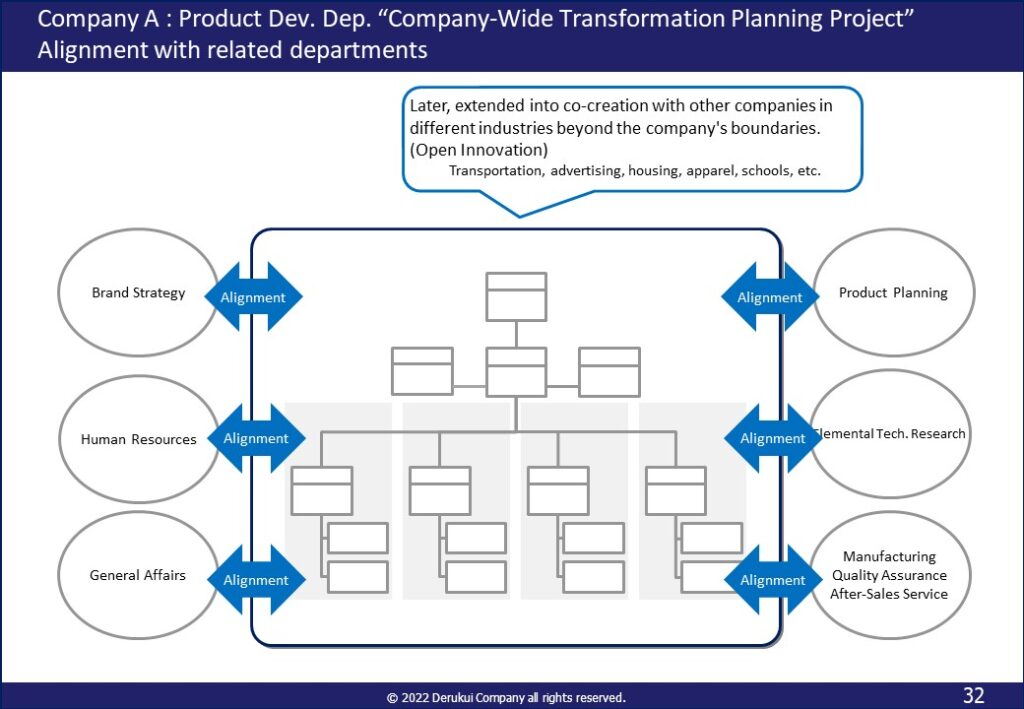
Interaction with related departments within the company was extremely active.
Its momentum has spread outside the company, not only domestically, but also internationally.
More than two hundred companies have been approached.
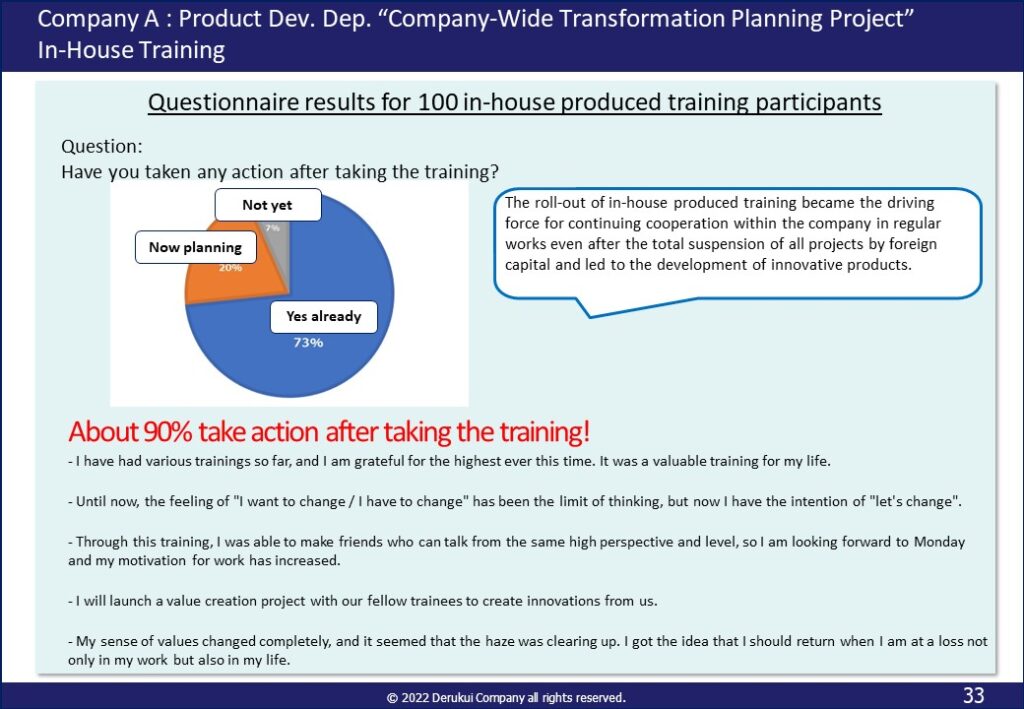
The training program was produced in-house and even sold externally.
It can be said that the in-house production of training led to the continuation of activities after the project was suspended, which in turn led to the realization of the “common sense breaking” product in the spring of 2022.

You can refer to the University of Tokyo paper.

Company B is a well-known housing equipment manufacturer.
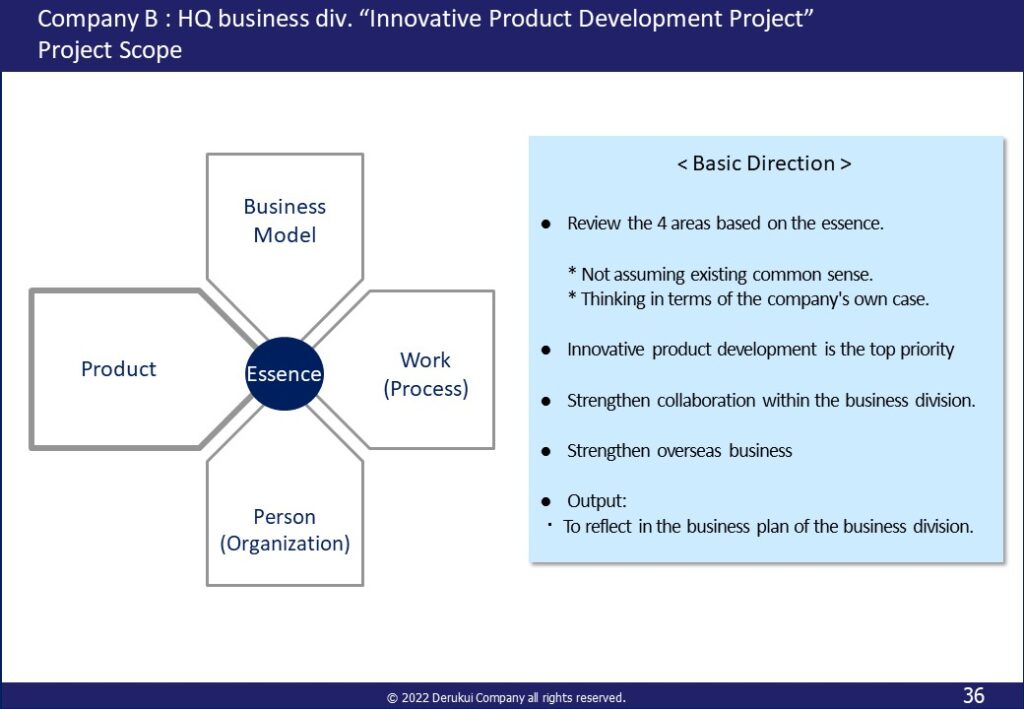
Company B had been suffering from a long period of stagnant growth.
In this context, the company’s main goal was to increase its product power, especially in overseas markets.
The members were drawn from the corporate planning and product planning related departments of the main business division.

Training and projects are promoted in parallel, and the action plan was completed in just over half a year.
After that, it was decided to be put into practice in the regular work of each department.

Company B also had a total of more than a dozen project members.
The project owner was the division director, the project management office was covered by the corporate planning general manager, the manager was the corporate planning section manager, and most of the members were section managers or one step ahead of section managers.
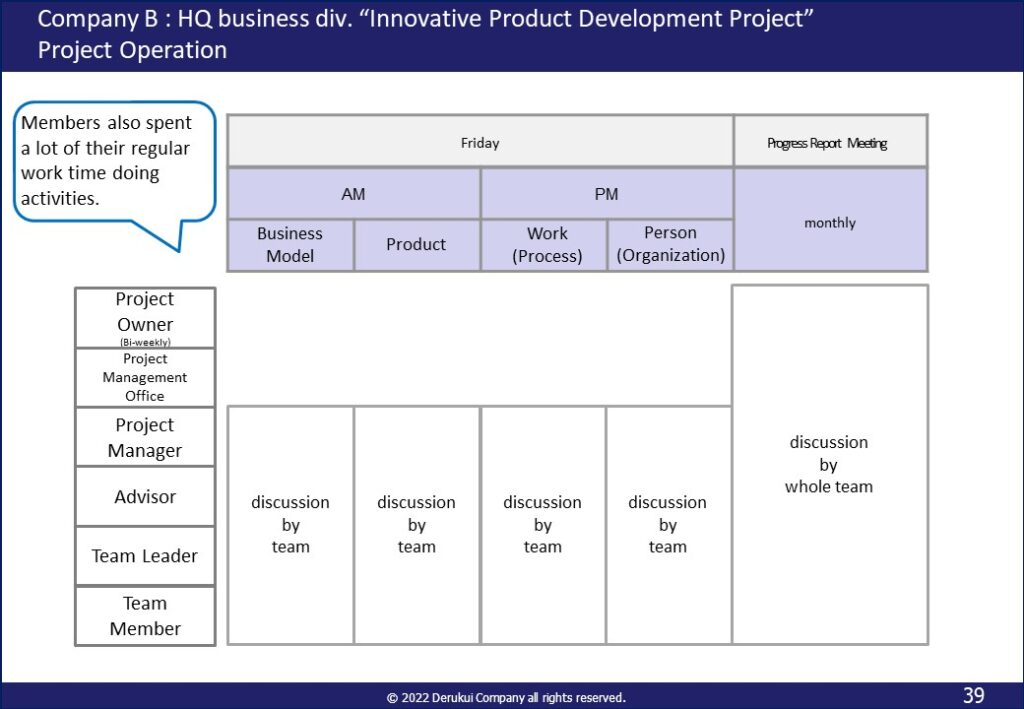
Only the general meeting was held monthly (with project owner participation), all others were weekly.
In fact, they also performed many related tasks outside of project hours.

Only one year after the start of the project (training), company B released its first “global product.”
The University of Tokyo is studying such a series of details.
